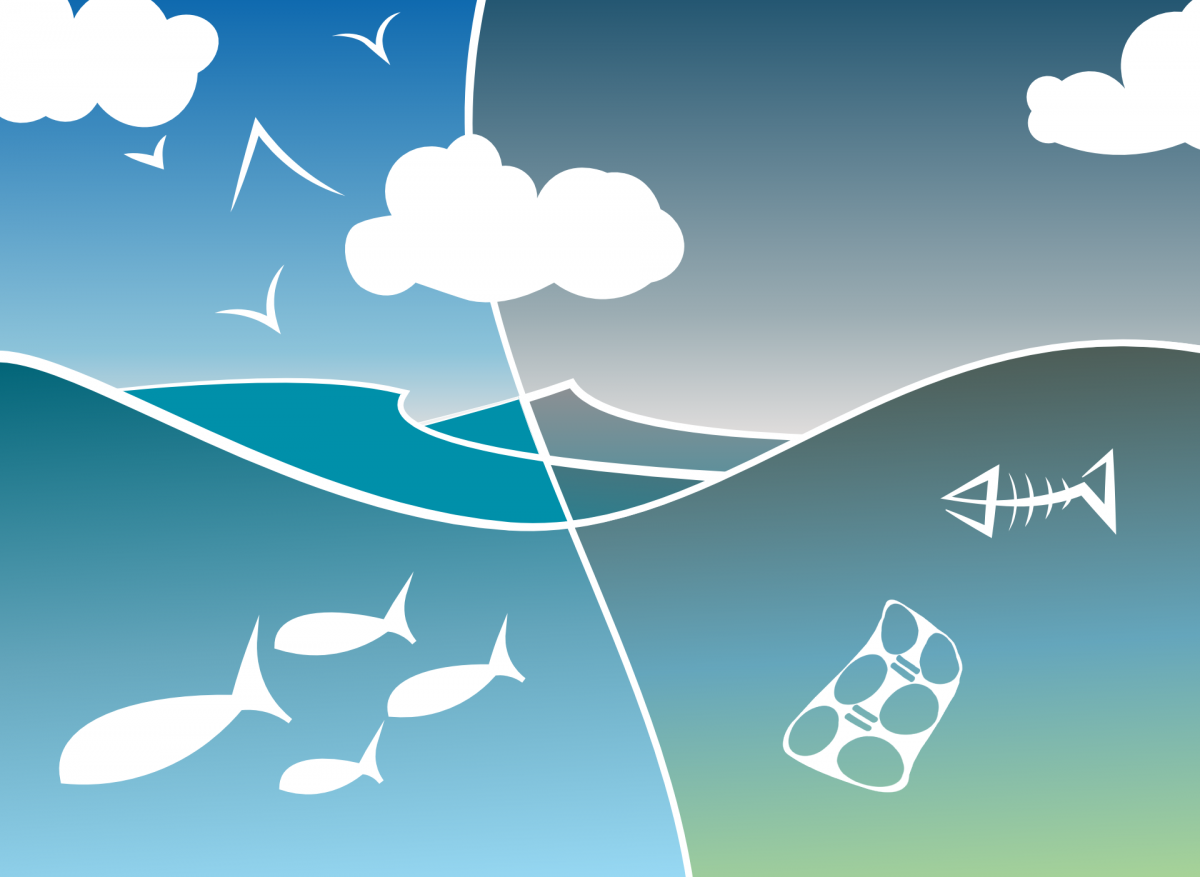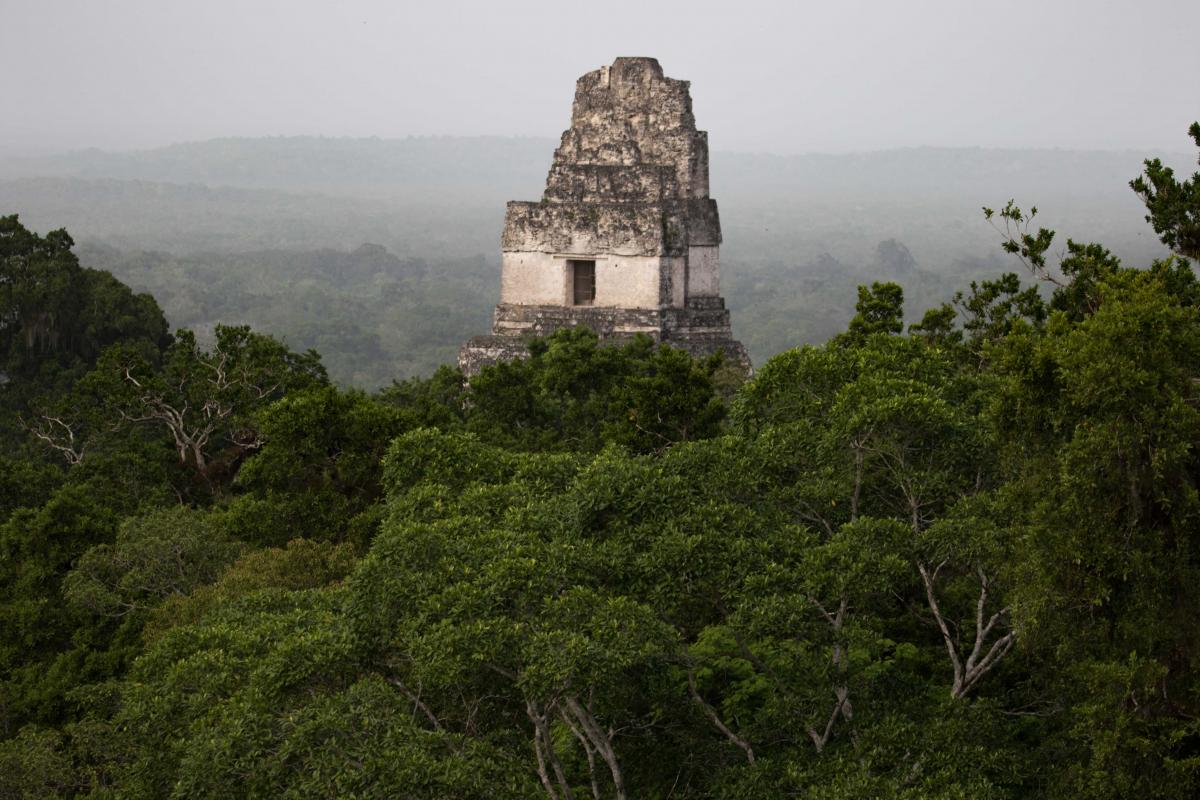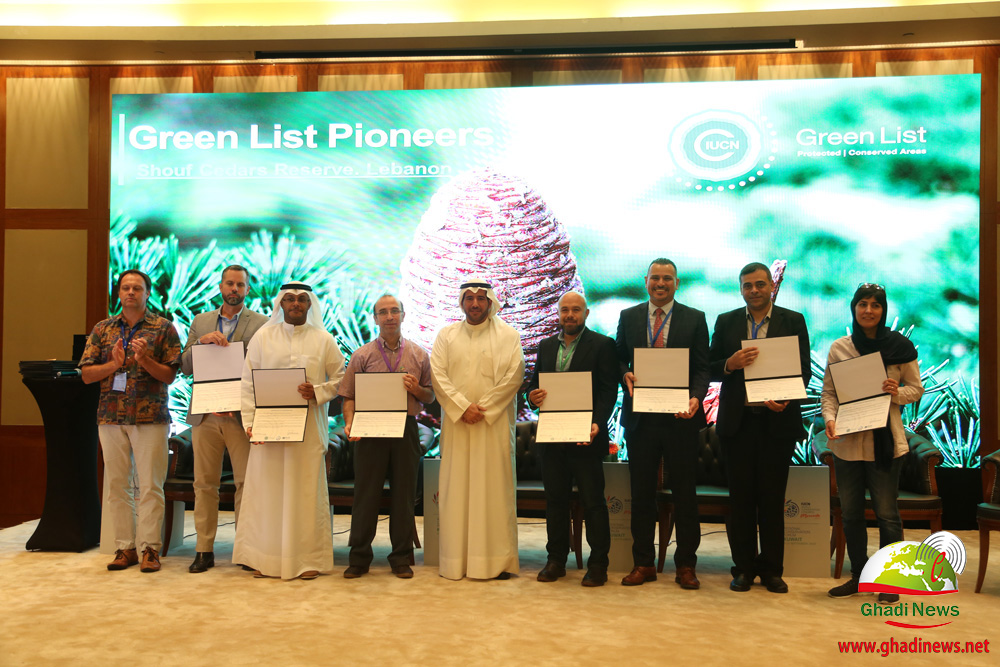The Right to a Healthy Environment
By Yann Aguila - On October 8, 2021, the United Nations Human Rights Council adopted a resolution recognizing the human right to a clean, healthy and sustainable environment as an important human right. While this right is already recognized in more than 150 national jurisdictions, its international recognition paves the way for its effective integration in international law and stronger implementation domestically.

Photo: Pixabay
I. The Right to a Clean, Healthy and Sustainable Environment: State of Affairs.
The right to a healthy environment has developed gradually since the 1970s when it was first alluded to by the 1972 Stockholm Declaration. Its first Principle states: “Man has the fundamental right to freedom, equality and adequate conditions of life, in an environment of a quality that permits a life of dignity and well-being”.
The Stockholm Declaration was a catalyst for the recognition of the right to a healthy environment at the national and regional levels. Today, according to UN Special Rapporteur David Boyd, the right to a healthy environment “is included in regional human rights treaties and environmental treaties binding more than 120 States. It enjoys constitutional protection in more than 100 States and is incorporated into the environmental legislation of more than 100 States. In total, 155 States have already established legal recognition of the right to a healthy and sustainable environment.”[1] At the national level, Portugal was the first country to enshrine this right in its constitution, in 1976.[2] Since then, the right to a healthy environment has rapidly spread to other constitutions, in a fashion unseen for any other “new” human right.
Alongside these national instruments, States developed an important regional legal corpus affirming the right to a healthy environment. For instance, the African Charter on Human and Peoples’ Rights (1981) provides that “[a]ll peoples shall have the right to a general satisfactory environment favourable to their development.” It is worth noting that the African Charter differs from other texts in that it confers this right not to individuals but to a group. Similarly, Article 38 of the Arab Charter of Human Rights (2004) protects the right of each person “to a healthy environment”. In Latin America, the Protocol of San Salvador to the American Convention on Human Rights (1998) recognizes the right of everyone to “live in a healthy environment”, and the Escazú Agreement (2018) further seeks to contribute “to the protection of the right of every person of present and future generations to live in a healthy environment”.
In the European region, the recognition of this right is less explicit. The Aarhus Convention (1998), which is equivalent to the Escazú Agreement, affirms in its first article “the right of every person of present and future generations to live in an environment adequate to his or her health and well-being”. Nevertheless, the European Convention on Human Rights (1950), does not enshrine the right to a healthy environment per se. Environmental issues are dealt indirectly through the European Court of Human Rights’ innovative and dynamic interpretation of the Convention, affording limited protection through already recognized human rights. For instance, the Court has extended the right to life, guaranteed by article 2, to include the right to be protected against risk resulting from hazardous industrial activities.[3] Similarly, the right to private and family life enshrined in article 8 was considered to comprise a right to be protected against serious damage to the environment.[4] In September 2021, the Parliamentary Assembly of the Council of Europe proposed to go further: it recommended the adoption of an additional protocol to the European Convention on Human Rights that would enshrine, among others, the right to a healthy environment.
The international recognition of the right to a healthy environment is much less advanced, as up until now States have shown reluctance to adopt a binding legal instrument recognizing such a right. Thus, the right to a healthy environment is essentially devoid of legal force in international environmental law. Apart from the aforementioned Stockholm Declaration, the Rio Declaration (1992) affirmed with less ambit that “[h]uman beings are at the center of concerns for sustainable development. They are entitled to a healthy and productive life in harmony with nature”. This somewhat coy terminology hints towards a resistance among States to recognize this right in the Rio Declaration.
In the face of such reluctance, several initiatives have sought to enshrine the right to a healthy environment in international treaties. For instance, the IUCN's Draft International Covenant on Environment and Development (1995) provides in its article 14 that States “undertake to achieve progressively the full realization of the right of all persons to live in an ecologically sound environment”. More recently, the draft Global Pact for the Environment (2017) proposed the recognition of the right to a healthy environment in its first article[5].
II. The Human Rights Council’s Resolution 48/13 of October 8, 2021
On October 8, 2021, the UN Human Rights Council adopted a resolution recognizing that the right to a clean, healthy and sustainable environment is a human right. This decision is a major step forward. Although not legally binding, its near-unanimous adoption shows consensus on the formulation, content, and importance of this human right.
-
- 1. The Way Towards this Resolution
In September 2020, a Core Group of States on Human Rights and the Environment (Costa Rica, Morocco, Slovenia, Switzerland and the Maldives) started informal discussions on the possible international recognition of the right to a safe, clean, healthy and sustainable environment. In March 2021, 69 States, among which figured previously reluctant States such as Germany, endorsed a statement unequivocally calling for the recognition of this right.
The Core Group’s initiative gathered thundering support. More than a thousand NGOs rallied behind their clarion call, including renowned organizations such Birdlife International, Greenpeace, and Amnesty International, or specialized organizations like the Center for International Environmental Law and the Global Pact Coalition. Fifteen UN Agencies also issued a letter endorsing the right’s recognition. This prodigious mobilization owes much to the tremendous leadership of UN Special Rapporteur on Human Rights and Environment David R. Boyd and his predecessor John Knox.
On October 8, 2021, and after a year of sustained advocacy, the Human Rights Council adopted Resolution 48/13 by a vote of 43 in favor, none against, and 4 abstentions (China, India, Japan, Russia). In spite of these abstentions and the absence of the United States from the Council, the adoption of this resolution reveals near-unanimous support from the international community for the right to a healthy environment.
-
- 2. A Forward-Thinking Text
The Resolution’s first article recognizes “the right to a clean, healthy and sustainable environment as a human right that is important for the enjoyment of human rights”. As further detailed below, this formulation encompasses the different expressions used to refer to this right. It further notes that it is not an isolated right, but that it is rather “related to other rights that are in accordance with existing international law”. The text also encourages States to take action by building capacities and enacting policies enabling the enjoyment of this human right.
Besides the letter of the text, the adoption of this resolution outlines that a consensus is building up in favor of environmental rights. While it does not legally bind States, the symbol it represents could propel the reluctant governments to recognize the right to a healthy environment in their domestic legislation. Moreover, the momentum behind the right may lead to its reinforced implementation in countries where it is already recognized. Finally, it could build up speed for the recognition of the right in an international and legally binding text.
The text of the resolution makes it clear that it is not a final step, but a springboard for more ambitious measures. It invites the UN General Assembly to consider the matter, where States are considering tabling a similar resolution.
III. Overview and definition of the concept
Depending on the legal instrument, the right to a healthy environment is referred to by various formulations.
International texts predominantly refer to a right ‘to a healthy environment’ or a right ‘to live’ in a healthy environment. Notwithstanding, the adjective ‘healthy’ has competition. In this respect, some may promote the protection of an “ecologically sound” environment (draft IUCN Covenant), “(permitting) a life of dignity and well-being” (Stockholm Declaration), “adequate to his or her health and well-being” (Aarhus Convention) and “respecting biodiversity”. The 2007 Malé Declaration on the Human Dimension of Climate Change chose to formulate it as “the right to an environment capable of supporting human society and the full enjoyment of human rights”.
Similarly, about two thirds of national constitutions that recognize the right refer to a ‘healthy environment’.[6] Alternative expressions may be used, such as the rights to a ‘clean’, ‘safe’, ‘favorable’, ‘wholesome’, or ‘ecologically balanced’ environment. The different denominations may refer to different forms of protection. For instance, the right to a “safe” environment will focus on the protection of the environment as a non-harming environment for human beings. This is particularly noteworthy as, according to the World Health Organization (WHO), 24% of all global deaths are linked to the environment.[7] On another level, the right to a “healthy" environment refers lost often to the protection of nature’s health as an ecosystem.
Yet, despite the variety of denominations, the core content of the right to a healthy environment is generally common to all these national, regional, or international texts. The fundamental interconnection between the protection of the environment and the effective preservation of human rights is at the center of each of these formulations.
Part of that is because the right to a healthy environment’s character as a “claim right”. Claim rights, unlike liberty-rights, imply a positive obligation of third parties towards the right-holder. This particularity was recently reaffirmed by several jurisdictions. For instance, both the Urgenda decision[8] and the recent ruling of the German Federal Constitutional Court[9] link the rights of individuals to an obligation of the State. The State is indeed a very frequent debtor of the right to a healthy environment. However, it is not impossible for other entities, such as private companies to bear obligations under the right to a healthy environment.
The right-holder being mostly the individual, the right to a healthy environment has drawn criticism for its anthropocentric character. It is certain that the idea that humans have a right to a healthy environment is strongly influenced by the western conception of human rights that places humans at the center of the world. This conception ought to be balanced with an eco-centric perspective, which puts nature at the core. The African Charter on Human and Peoples’ Rights (1981) takes a step in this direction by recognizing the right of all “peoples” to a satisfactory environment. Some jurisdictions have gone even further in that direction by recognizing rights to nature. The Supreme Court of Colombia thus recognized that the Colombian Amazon can be a subject of rights.[10] In New Zealand, sites of particular importance to the Māori people, such as the Whanganui River, the Te Urewera Forest, or Mount Taranaki, were also granted legal personhood.
IV. What are the implications of such a recognition?
From a legal point of view, the right to a healthy environment has procedural and substantial implications. Taking as a reference the implementation of the right to a healthy environment by national jurisdictions, a majority of States have enacted legislation identifying procedural and substantive elements enabling for the effective implementation of this right.
On the one hand, recognizing a right to a healthy environment often implies upholding procedural rights such as the rights to receive information, to participate in decision-making about environmental matters, and to obtain access to the justice system. For instance, the Philippines have enacted specific rules regarding environmental litigation to facilitate the protection of the right to a healthy environment.[11]
Alongside procedural rights, the right to a healthy environment also contains a substantive component. By definition, the right to a healthy environment, regardless of its precise formulation, protects the elements of the natural environment that enable a dignified life. It englobes the preservation of basic human rights such as the right to life, clean water, food, etc. For instance, the French Environmental Code recognizes the “right of all to breathe air which is not harmful to their health”.[12] In the same vein, the South African Constitution states that “[e]veryone has a right: (a) To an environment that is not harmful to their health or well-being”.[13]
Moreover, this substantive component has allowed national and regional courts to impose duties on States to effectively implement the right to a healthy environment. In its landmark decision of 2020, the Inter-American Court of Human Rights held that Argentina had violated the right of the Lhaka Honhat indigenous groups to a healthy environment due to the lack of effective measures to stop activities harmful to them. Thus, Courts have recognized that States can have an obligation to prevent violations of the right to a healthy environment.
Nonetheless, the implementation of this right remains patchy due to sizeable challenges. At the international level, it is recognized only in regional conventions and in soft law instruments. In other words, it is yet to be recognized in a global and legally binding convention akin to the 1966 human rights international covenants. Such a convention would encounter significant difficulties as major world powers, such as the USA and China, are still reluctant to recognize this right for the moment.
At the national level, a recognition of the right to a healthy environment should entail the enactment of “implementation laws”. Yet, States that recognize this right constitutionally or through regional treaties do not always implement it legislatively. Without effective integration in national laws and procedures, the right to a healthy environment is barred from realizing its full potential. To this day, many States fail to uphold their obligations in a way that effectively respects, protects, and fulfills the right to a healthy environment.
Controlling the implementation of this right is not an easy ordeal either. So far, no official international mechanism monitors its application. One could argue that this gap could be filled by an implementation control mechanism at the international level. This mechanism could, minimally, take the shape of a compliance committee but whose referral should be open not only to States but also to citizens and NGOs on the model of the Aarhus Convention. Better still, an international jurisdictional organ could have as its object to ensure the respect by States of the right to a healthy environment.
In the absence of such international mechanisms, the line of first defense remains the national judge. Internal judges ought to be the first guarantors of the respect of the right to a healthy environment by taking into account the extra-territorial impact of a State's activities, including outside its borders. In other words, the national judge must ensure that the State respects not the right of its citizens to a healthy environment, but also that of all the inhabitants of the planet.
Notwithstanding, the evidence extracted from decades of implementation is encouraging. The recognition of the right to a healthy environment usually leads governments to bolster their environmental laws and policies and to provide for greater public participation.[14]A wide array of studies have indeed concluded that the inclusion of constitutional environmental rights is positively related to a better environmental performance.[15]
In conclusion, the adoption of Human Rights Council resolution is a resounding first step that could have far-reaching implications for human rights and the environment. If carried before the General Assembly, this resolution may well be the catalyst for an even more global international recognition, and perhaps even an international covenant on the right to a healthy environment.
[1] Boyd, D., Chapter 2: The Right to a Healthy and Sustainable Environment in Aguila, Y. and Viñuales, J.E., 2019. A Global Pact for the Environment-Legal Foundations. University of Cambridge.
[2] Report of the Special Rapporteur on the issue of human rights obligations relating to the enjoyment of a safe, clean, healthy and sustainable environment, 19 July 2018.
[3] ECHR, Öneryildiz v. Turkey, Application n° 48939/99, judgement of November 30th, 2004.
[4] ECHR, Lopez Ostra v. Spain, Application n° 16798/90, judgement of December 9th, 1994.
[5] The text of the draft Pact is available online on the Pact website: https://globalpactenvironment.org
[6] Id. Boyd D., in Aguila, Y. and Viñuales, J.E., 2019.
[7] Preventing disease through healthy environments: a global assessment of the burden of disease from environmental risks, WHO Report, 13 September 2018.
[8] Urgenda Foundation v. State of the Netherlands, Supreme Court of the Netherlands (December 20, 2020)
[9] BVerfG, Order of the First Senate of 24 March 2021 - 1 BvR 2656/18
[10] Supreme Court of Columbia, Future Generations v. Ministry of the Environment (April 5, 2018)
[11] Rules of Procedure for Environmental Cases, Republic of the Philippines Supreme Court Manila, April 13, 2010.
[12] French Environmental Code, art. L220-1.
[13] Constitution of South Africa (1996), sec. 24
[14] D.R. Boyd. 2012. The Environmental Rights Revolution: A Global Study of Constitutions, Human Rights, and the Environment. Vancouver: University of British Columbia Press.
[15] See per instance, C. Jeffords and L. Minkler. 2016. “Do Constitutions Matter? The Effects of Constitutional Environmental Rights Provisions on Environmental Performance,” Kyklos 69(2): 295-334. or C. Jeffords. 2016. “On the Temporal Effects of Static Constitutional Environmental Rights provisions on Access to Improved Sanitation Facilities and Water Sources,” Journal of Human Rights and the Environment 7(1): 74-110.
About the Author
 Photo: Yann Aguila
Photo: Yann Aguila
He chairs the Environment Commission of the Think Tank « Le Club des juristes », at the origin of the Global Pact for the Environment initiative.
He is the author or co-editor of numerous books and articles, such as « A Global Pact for the Environment: Legal Foundations », « Droit public français et européen » or « Principios de Derecho Ambiental y Agenda 2030 »



